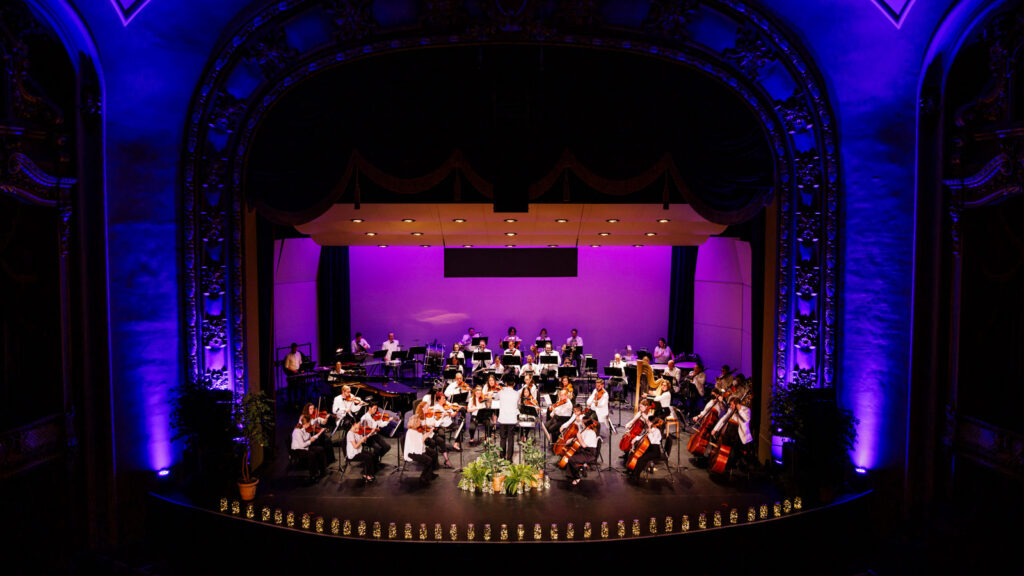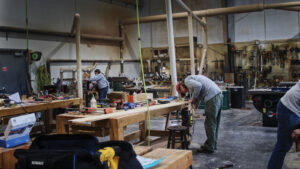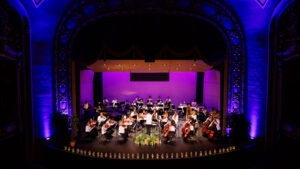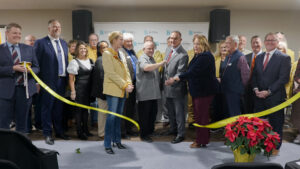Orchestras are among the industries that suffer from a chronic condition. It does not affect the human bodies of its professionals, but it does affect the body’s livelihood. Orchestras famously have what’s referred to as Baumol’s cost disease.
First diagnosed in the 1960s, this economic disease is caused when wages and operating costs rise in industries where productivity growth is low or nonexistent. For example, it takes orchestra members the same amount of time to play Tchaikovsky’s Symphony No. 6 now as it did when the work was first performed in the nineteenth century. But the money it takes to support an organization like the Missouri Symphony continues to grow. And that can put the future of MOSY and all orchestras in danger.
Other factors also threaten their survival, such as declining interest in classical music. Aficionados of the genre tend to be older, white, and wealthy, limiting audience potential. And in a post-pandemic, streaming world, people are less likely to want to show up at a theatre to experience a live performance.
Orchestras are a business. The fact is that they’ve never been able to sustain themselves on ticket sales, but they’ve been around for centuries. How is MOSY doing these days? Fortunately, this orchestra is playing on.
The Business of Classical Music
Trent Rash, MOSY’s executive director, said only a few cities the size of Columbia have a professional orchestra. MOSY is a mid-sized orchestra that averages about fifty musicians divided among the strings, woodwinds, brass, and percussion sections. Those professionals have day jobs. More than half are music professors, teachers, or private instructors. However, they are paid for rehearsals and performances because they are, indeed, professional musicians. And like anyone with a contract side hustle, they receive an annual 1099 tax form.
Filling the stage with such talent isn’t an inexpensive endeavor. That’s where a large portion of MOSY’s roughly $750,000 annual budget is spent. Front-office operations are lean, with three full-time staff, including Rash, a director of operations, and an orchestra manager, who is also the director of the MOSY Conservatory. That’s the organization’s educational arm, where young musicians are encouraged to become advocates of classical music.
“It is such a gift to have an orchestra in a community of this size,” Rash said. “The fact that we do and the fact that we have close relationships with the University of Missouri, with Stephens College, Columbia College, and the Columbia Public Schools — along with the collaborations we do with a number of the other arts organizations — is a really special thing. I don’t want people to take it for granted because it is difficult for us to simply exist in a community of our size. The sustainability factor is always on the table because we need a lot of support to keep the doors open.”
MOSY also has three part-time staff: a marketing manager, an events manager, and an assistant conductor. The orchestra’s position of conductor and music director is likewise part-time. Wilbur Lin is the associate conductor of the Colorado Symphony, dividing his time between his home in Denver and his role with MOSY in Columbia. Notably, Lin is only the third conductor in MOSY’s 55-year history, which speaks to the consistency of creative leadership for the organization. But MOSY has made many changes, especially in the past few years, to keep this classical culture alive and well.
Remaining Relevant
“It’s all about relevance in this day and age,” Rash says. “I don’t think culture is dead. I just think people have changed their view of what culture is. We have to show people there is still relevance in this classical form of music as much as there is in the pop side, and that they are, in fact, related.”
Classical music often gets a bad rap for relevance in the twenty-first century. Composers are too often only associated with wig-wearing white European guys who composed music long ago. But there are moments of good rap, such as Kendrick Lamar’s 2015 performance with the National Symphony Orchestra at the Kennedy Center in Washington, DC. K.Dot demonstrated that classical music is accessible, regardless of age, race, or musical genre, and that’s the kind of thing MOSY wants to promote.
While selling more tickets to events will help MOSY’s bottom line, it won’t make the orchestra profitable. In fact, Rash says that ticket sales account for only about 30 percent of annual revenue. Performances do well to break even, and most end up in the red. The organization relies mostly on donors and corporate sponsors to come up with the other 70 percent.
This isn’t a new problem. After renovating the Missouri Theatre in 2008, MOSY found itself $3.7 million in the hole. The University of Missouri, which had signed a three-year lease agreement in 2011, ended up purchasing the theatre from the organization in 2014 for that amount, giving MOSY a clean slate.
No longer drowning in debt, MOSY began building its reserves, which is vital for the survival of any nonprofit. But pandemic shutdowns sent it reeling and forced the organization to dip deeply into those reserves. For example, even though the 2020 summer music festival was canceled, MOSY paid its musicians some of what they would have made. Revenue still hasn’t kept pace. At the end of the last fiscal year, MOSY had a budget deficit of $101,000.
Other factors caused some budget-related hiccups. In December 2022, the MOSY Board of Directors adopted an August 1 to July 31 fiscal year to align with the academic year. And in 2018, the organization rebranded itself, dropping the privilege-oriented “Society” from its name. That change ran deeper than its moniker, marking MOSY’s switch from a membership-based nonprofit to a donor-based model. However, fundraising plans designed to capitalize on the organization’s fiftieth anniversary were thwarted, as MOSY’s anniversary year was — wait for it — 2020.
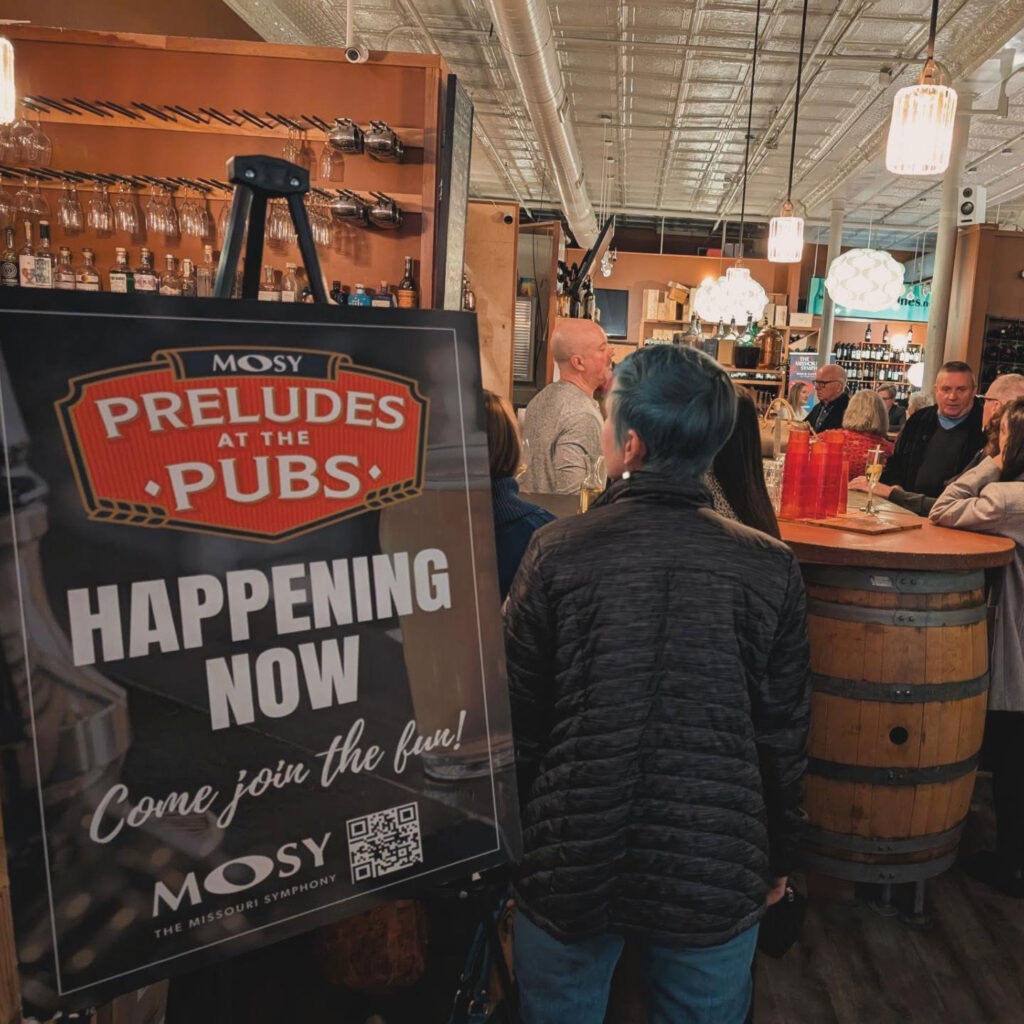
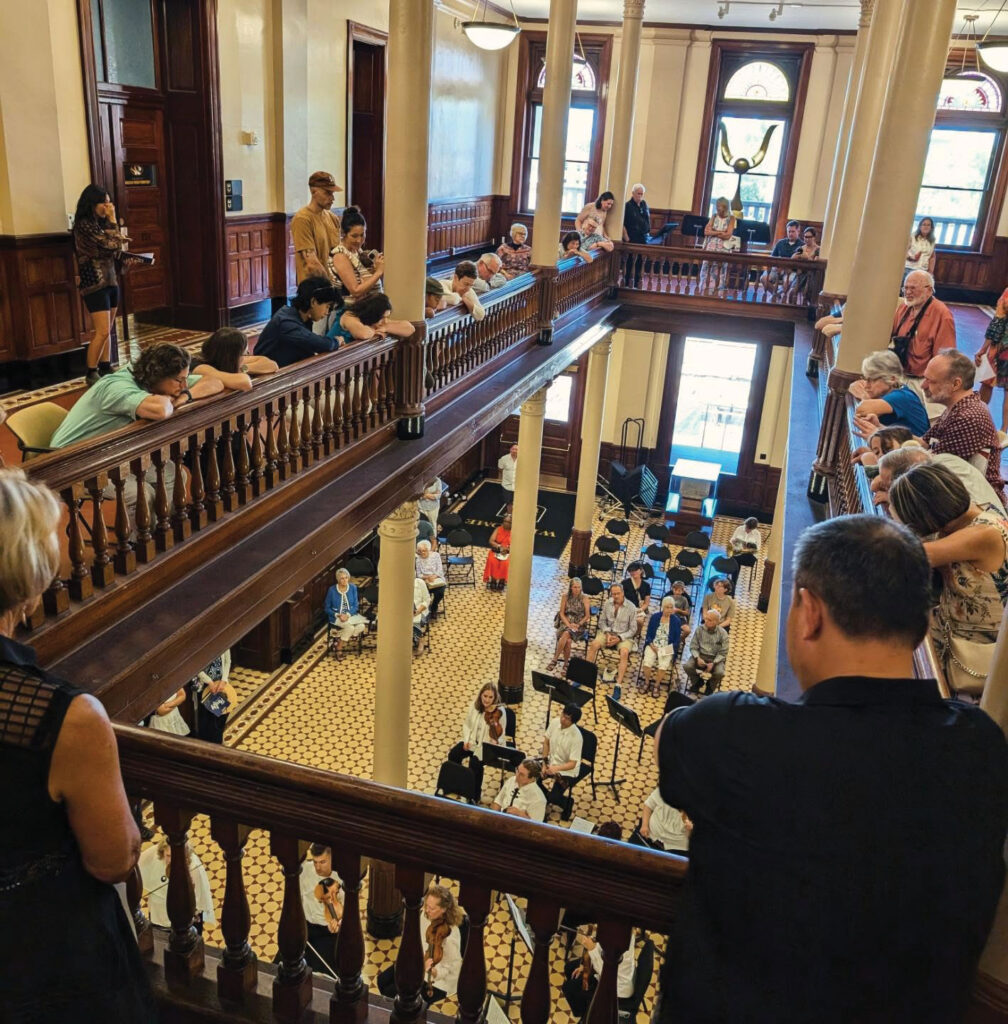
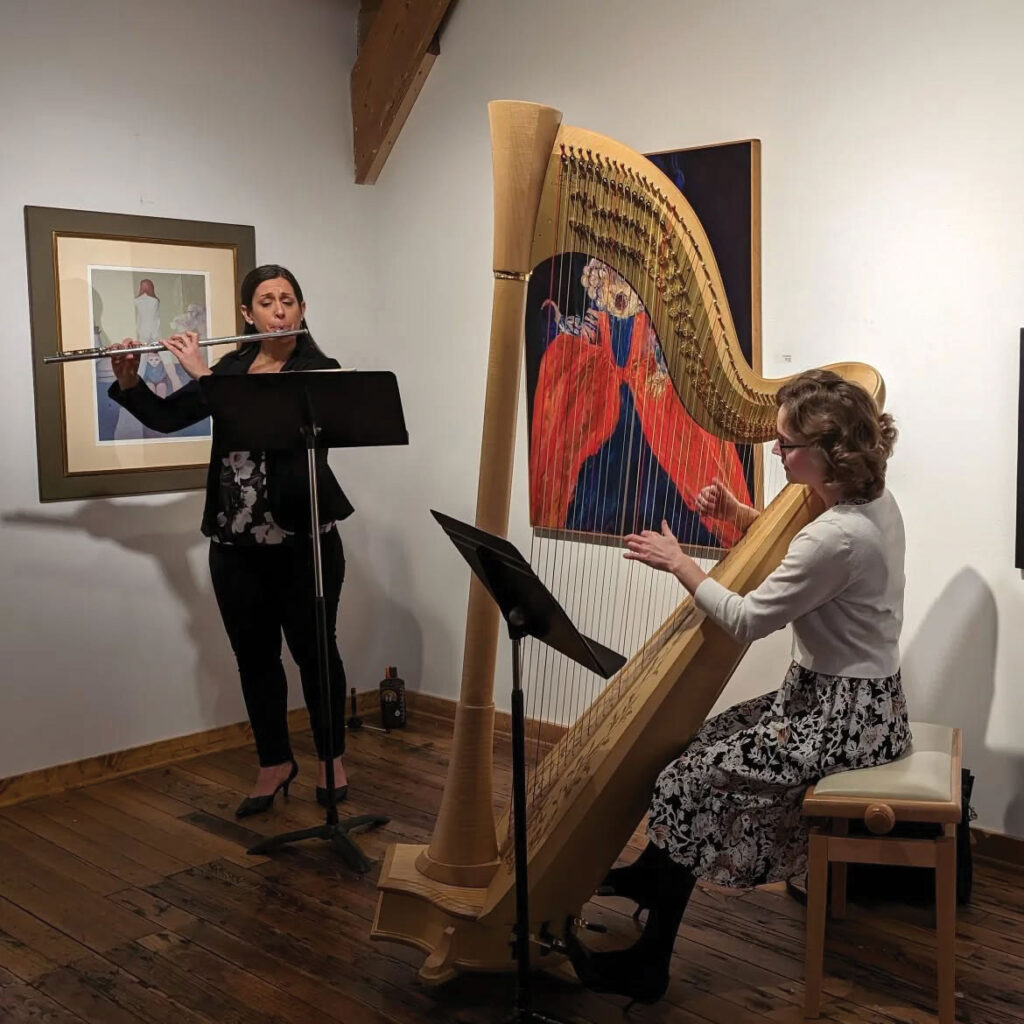
Building a Bigger Tent
Rash says audience numbers are rising. The annual holiday show is a perennial sellout, filling the Missouri Theatre to capacity. But other concerts may attract only about 500 attendees. The summer Firefly Music Festival features multiple performances held in multiple venues, and MOSY hires additional talent for this one. About 30 musicians from orchestras around the country join MOSY for a summer residency.
While these performances are traditional, MOSY has been pushing the envelope to attract a more unconventional following. The point of these events is to engage new people.
“We’re having to change the way we engage with people because they want more return on their investment. They want more than just a concert,” he said. “They want a true experience.”
Preludes at the Pubs began during the pandemic when indoor performances were forbidden. MOSY paid chamber ensembles to perform at restaurants with outdoor seating. The music is free for the venue and patrons, although donations are encouraged, and most performances now have corporate sponsors.
“It has come to have a quite a following,” Rash says. “There are at least 50-plus people who come just for us. It’s a win-win for the restaurant and us.”
MOSY has held three iterations of “Sound Bites,” where local chefs work with Lin to create dishes that complement an orchestra performance, such as Vivaldi’s “Four Seasons.” This immersive experience sold out all three times, forcing MOSY to move from Cooper’s Ridge Event Center to Kimball Ballroom at Stephens.
“I have seen such a demographic shift with that particular event,” Rash says. “I’ve seen a lot of people who are Gen Xers or younger, a lot of millennials, even some Gen Zers making a date night out of it. So, that has definitely been a way that we can engage with a different sort of audience demographic.”
Then there’s the Black History Month Concert, which combines the orchestra performance of Black composers with relevant narratives. For example, the first one, held in 2024, took place at Second Missionary Baptist Church. A small chamber orchestra performed Carlos Simon’s “Requiem for the Enslaved” accompanied by Rev. Clyde Ruffin’s narration of records written by enslaved people.
And if sitting in the beautifully restored Rococo Missouri Theatre isn’t compelling, other events give audiences the option to move around, such as a lab concert experience held in 2023 at the State Historical Society of Missouri as part of the Firefly Music Festival.
“We created an avenue between the strings, the brass, and percussion called ‘The Avenue of the Brass,’” Rash said. “You could actually walk through the orchestra. You could walk up and down the stairs and sit at different levels to listen.”
Like a wily party host who wants to encourage mingling, the orchestra put out fewer chairs than there were attendees. As a result, “everyone walked around – even people who have been coming to the symphony for fifty years. People were enthralled. They were mesmerized,” Rash recalls.
In 2024, the audience could wander around the Jesse Hall rotunda during the performance, participate in the creation of a living art piece, or contemplate the music during yoga on the top level of the rotunda.
“We still offer music in the traditional setting at the Missouri Theatre,” Rash said. “But some people aren’t able to get their imagination there without some more active participation.”
The traditional symphony isn’t dead. But building a bigger tent that makes room for more diverse audiences is key for MOSY’s survival.
Raising the Curtain
Rash says virtually all MOSY members became donors when the organization changed its structure. And Columbia businesses continue to provide sponsorships and opportunities for MOSY musicians to perform. MOSY receives grants, although public and foundation funding for the arts is on a downward trend. To build back its reserves, MOSY will have to take a different tack.
Rash says the nonprofit is exploring the launch of a capital campaign in the near future to raise at least $1 million. At least half will likely go into an endowment, and the rest will bolster operations and pay off debt. Plus, it’s an opportunity to bring more disciples to the classical table.
MOSY musicians will still perform in the Missouri Theatre. But efforts to cast a wider net are paying off, despite the scourge of Baumol’s cost disease. And that is a prelude to success.
